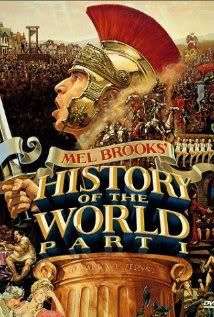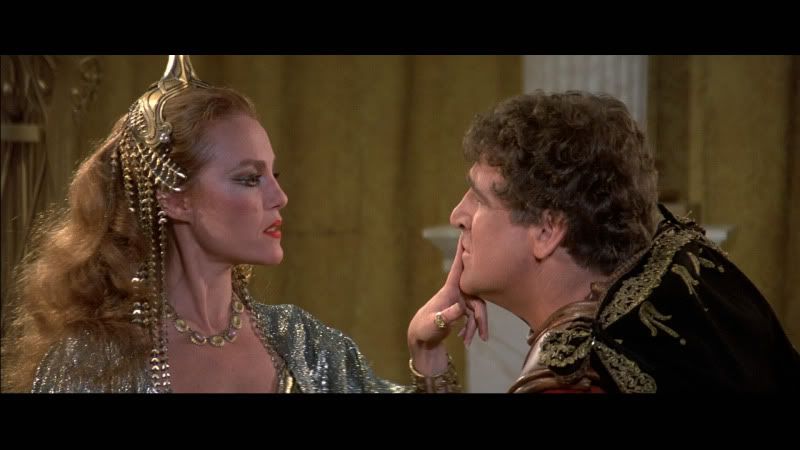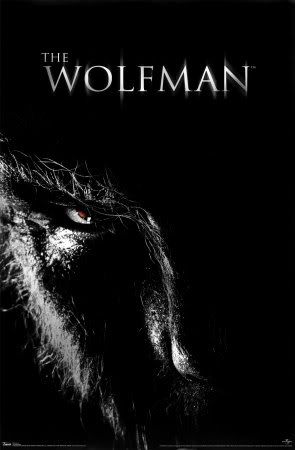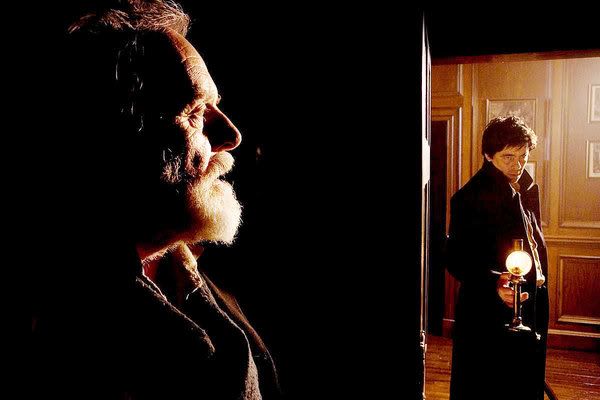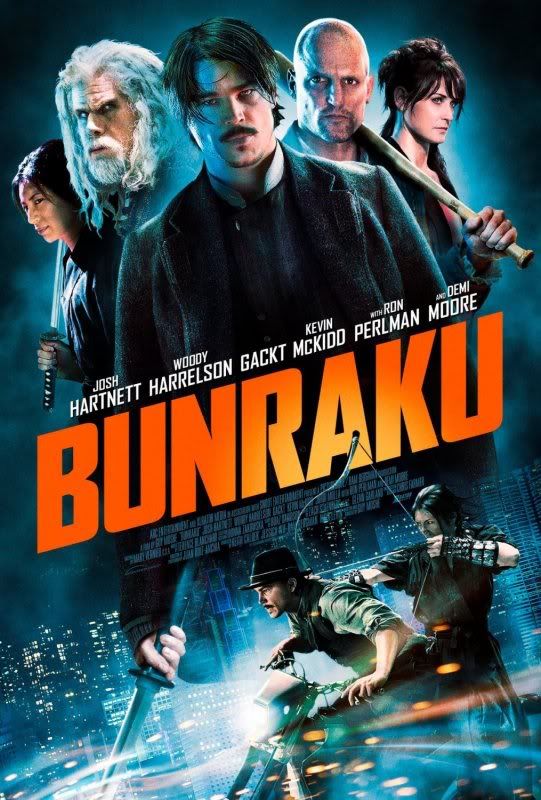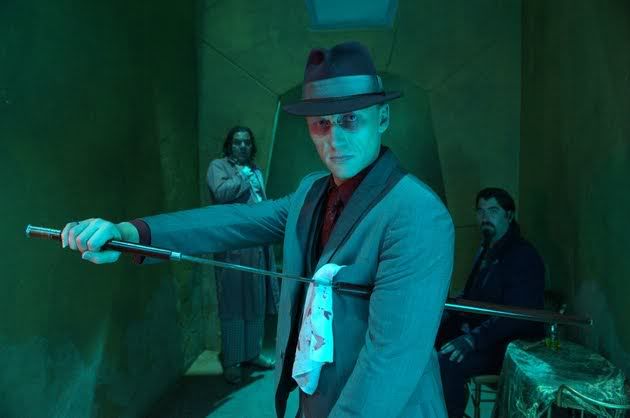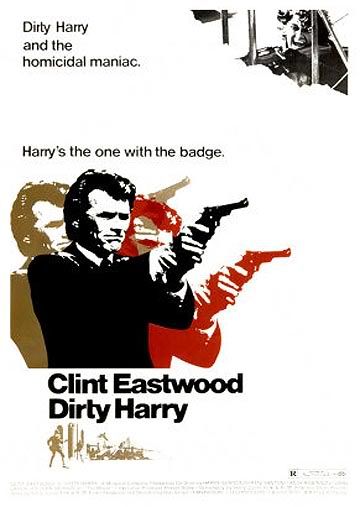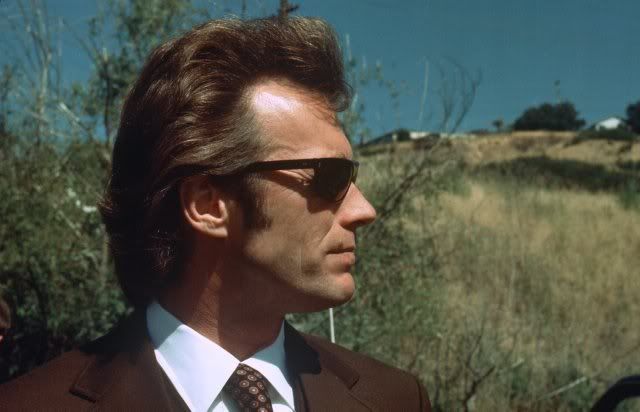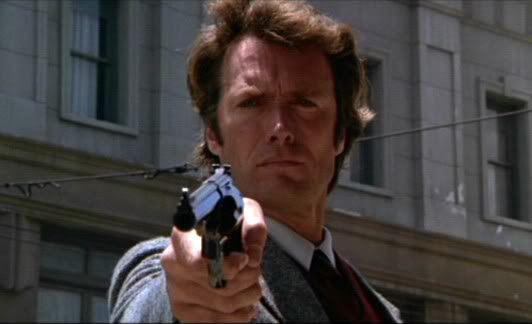
[audio:http://www.blueinkalchemy.com/uploads/ghost_rider.mp3]
There was a time when superheroes subscribed to a certain template. If the handsome face of the hero’s alter-ego didn’t emerge from the phone booth in brightly-colored tights and a complimentary cape, he simply wouldn’t be welcome at the Superfriends clubhouse. As time went on, it was realized that this sort of pigeon-holing was kinda stupid. Many heroes eschew the capes for reasons of safety as well as fashion, and some also wear clothing more practical than tights. I can only think of one, however, who even goes so far as to completely go without the handsome face, or any flesh on the skull whatsoever. That’d be Marvel’s Ghost Rider, and like so many comic books, his story got made into a major motion picture.

The Ghost Rider is, for all intents and purposes, an agent of Satan on Earth. Mephisopheles has limited powers over mortals, you see, and sometimes gets impatient to collect the souls he’s owed among the degenerate human populace. So every generation or so he offers someone a deal for their heart’s desire in exchange for servitude on earth as well as torment in the afterlife. The latest sucker to fall for this one-sided contract is Johnny Blaze, the younger half of a carnival stunt-riding double act who signs up to save his father from the cancer that’s killing him. Naturally Old Scratch exploits a loophole and Johnny spends the next decade or so trying to kill himself in stunt shows only to make himself an obscene amount of cash. It’s the Devil’s son and a few fallen angel cronies going on a rampage that prompts Mephisto to call in his debt, transforming Johnny into the Ghost Rider to track down the rogues and secure a contract worth a thousand evil souls.
Ghost Rider joined the Marvel pantheon in the 70s when the bombastic writing was cribbing entire pages of notes from Stan Lee, and the art looked like it’d ridden into your living room off of your Iron Maiden poster though a pallet of surprisingly bright colors. However, he really came into his own around the 90s when a lot of comic book writers and artists thought it was really edgy and original to have their super heroes emerge from Hell, like Spawn or Lady Death. He’d always worn a black leather biker jacket, natch, but the 90s are where the spikes and chains and so-called edginess comes from. The movie takes big art cues from this awkward period in comic-book history and it doesn’t quite work as well as the director might have intended. There are a couple cool bits with the Devil himself but a lot of that is probably due to Peter Fonda’s undeniable screen presence instead of the somewhat lackluster CGI on display.

“Nice bike…”
Another aspect of the movie that doesn’t always fire on all cylinders is the main plot. Johnny’s story and his awareness of and ability to control his curse are more than often pushed aside for the villains’ pursuit of the demonic MacGuffin. It’s a storyline that feels a lot like a rehash of the plot of the original Blade. But unlike that post-Matrix vampire flick, the ‘main’ villain doesn’t have a sliver of the Devil’s charisma or presence. Your mileage may vary but it seems to me that trying to out-ham Nicholas Cage never ends well. And you know how in Blade or The Matrix there was an actual credible threat to the protagonists? Not the case here. You’d think that the Nephilim, the antediluvian giants supposedly wiped out in the flood chronicled in Genesis, would be more than mere cannon fodder disposed of with the ease of flicking ants off of your desk. Add a tepid, predictable and poorly placed plot, and you have a film that sucks all the fun out of the room whenever it drags us away from character beats or interesting interplay.
If the film were more about those moments, though, it might have worked more positively. I’ve spoken at length about Nicholas Cage in the past, and it’s clear that he’s enjoying playing Johnny Blaze. He’s cool as can be when jumping over a dozen big rigs on a motorbike and wonderfully eccentric with his jelly-bean eating and love of monkey-based television, but when he encounters the girl of his dreams he turns into a barely functional fanboy. For her part, Eva Mendes plays off of his nervous earnestness with a sincerity of her own, trying to play it cool but being more emotional than she’d like to admit. The very best moments, though, happen between Cage and the always enjoyable Sam Elliot, a grizzled stranger tending graves known only as the Caretaker who knows more about the Ghost Rider than he lets on at first. The scenes between him and Cage are pretty damn compelling, and if it had been him acting as more of a night-to-night mentor showing Blaze how to hone his curse and use it for good rather than letting it rule his life, I feel it would have gone over a lot better with audiences.

He does this pointing thing a LOT.
The biggest problem I have with Ghost Rider is this. Not that the acting is bad or the plot is weak or the effects a bit cheesy in places. It’s that so much more could have been done with this character and his relationships, with the girl and the old man. The most egregious example of this is when the Caretaker whistles for his horse, reveals his true nature and rides with Blaze to the city of the damned for the final showdown, only to turn around and let Johnny wade in there alone. It was a literal out-loud “What the FUCK?” moment that had me tearing my hair out in sheer frustration. There’s so much going on with Sam Elliot’s character and a good deal of earnest chemistry between the two Riders (and even some between Cage and the underrated Mendes) but it all goes to waste. It’s every bit as disappointing as it is infuriating.
For a flick named after the devils bounty hunter on a badass demonic chopper, Ghost Rider seems to go nowhere. At times it will evoke movies like Tim Burton’s Batman or body horror chronicles like The Wolfman but it never quite rises above the level of mediocre. Every positive thing I could say about it, such as some of the dialog and a few choice scenes like the bit where he drives straight up the side of a building, is balanced by something inexplicable or downright awful, like the total lack of tension, Ghost Rider lassoing a helicopter for no reason, and pretty much everything involving Blackheart. If you’re watching a movie and wishing the action scene would just end already so the hero can get back to talking to the weird old guy in the graveyard, something’s gone wrong somewhere. It never drops to the level of unwatchable, but I cannot in good conscious recommend Ghost Rider, mostly because it teases us with glimpses of what could have been before shoving more generic supernatural action in our faces. It’s like going to a nice restaurant and being offered a few samples of fabulous appetizers only to have the waiter dump a bowl of generic salsa on your head and charging you full price for your samples. You’re unsatisfied, frustrated, you smell funny and you’ll be picking cilantro out of your hair for a week.
Josh Loomis can’t always make it to the local megaplex, and thus must turn to alternative forms of cinematic entertainment. There might not be overpriced soda pop & over-buttered popcorn, and it’s unclear if this week’s film came in the mail or was delivered via the dark & mysterious tubes of the Internet. Only one thing is certain… IT CAME FROM NETFLIX.

